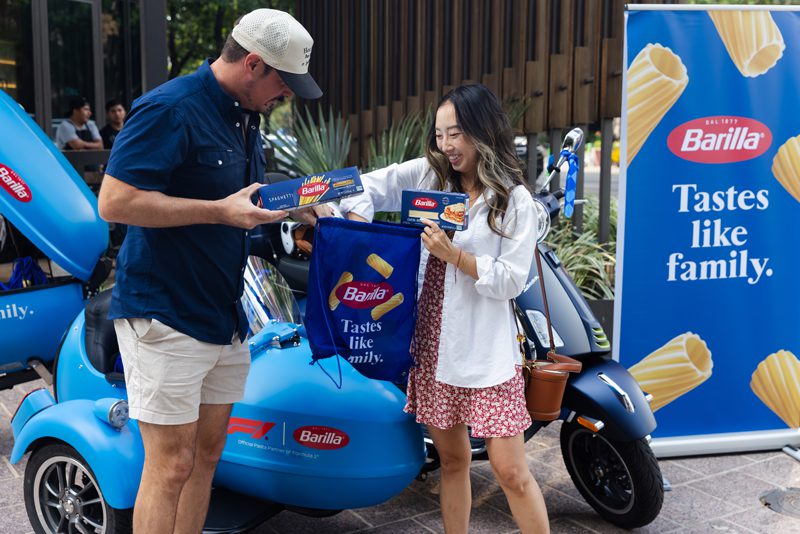“Pinkitude,” a pop-up store, appeared in Los Angeles last month selling a new fashion brand inspired by the Pink Panther. But despite the neatly arranged racks of designer clothes ready to be purchased, the kitschy shop has one main mission: to teach teens and young women about the importance of breast health and early detection of breast cancer.
Pop-up shops are about driving sales — no doubt. But they are also taking on additional tasks, like the Pinkitude store did. They often play dual roles: In this case one was breast health, to entice people to visit. A second was to be a retail outlet. Their exclusivity and elusiveness are appealing. Here one day, gone the next.
MGM Consumer Products, the creator of Pinkitude, is using the shop to promote its yearlong cause marketing effort. Educational materials are distributed to visitors and dropped into shopping bags. MGM plans to donate at least 5% of the sales to Susan G. Komen for the Cure.
The 800-square-foot space is open through mid-September at Xin Boutique selling apparel, jewelry and accessories.
“It was the right size due to the number of licensees we had,” says Warren Schorr, MGM Consumer Products’ executive director of worldwide retail business development and international licensing. “Anything bigger than that, then we would have needed more partners.”
FINDING A NEW CUSTOMER
For Mattel, a pop-up shop was a way to expand its customer base in Japan. Despite being one of the largest toy markets in the world, Japan has a very small doll market. And even though Japanese girls did not necessarily grow up playing with Barbie dolls, as they grew they recognized the doll for her fashion heritage and leadership, says John Cullen, vice president, international, for Mattel Brands Consumer Products.
To tap into that fashion sense, Mattel created a Barbie apparel and accessory collection by designer Patricia Field for these 20- to 25-year-old women. It opened the store for three months this spring in Tokyo’s fashion-foward Shibuya district.
“We wanted to bring fresh excitement to the brand to go after a broader customer base,” Cullen explains.
The company chose a two-story, 1,000-square-foot shop, complete with full-size windows.
TESTING … TESTING
Procter & Gamble popped a shop near Ohio State University last fall for six months to test a new line of fabric refresher products called Swash. It featured a selling area and demonstration stations for each of the “between-wash” products, which are marketed under the Tide brand. The store also offered a lounge area, video games and computers to entertain students.
“A new store for a new product just kind of made sense,” says Fritz Westenberger, president of ad agency Hazelwood, which operated the shop as Sugartown Creative.
Did it work? Swash had a 60% awareness by yearend, and an 85% likeability factor, Westenberger says. P&G polled students to gauge those results. Even better, one in three people bought something in the store.
P&G promoted the store with on-campus advertising, posters and fliers. Reps distributed about 25,000 premiums during campus events, including branded laundry bags, T-shirts and hand fans, as well as product samples.
P&G is planning a test launch of Swash at retail stores in Lexington, KY, this month, says Kash Shaikh, P&G’s influence marketing manager for fabric care.
ALL GROWN UP
Another firm used a store to reach a new age group.
Ragdoll, the creator of the popular kids’ TV show “Teletubbies,” ran a store in New York’s West Village in 2007 to re-introduce the preschool brand to teens and tweens. The show is in reruns.
“It was about generating brand awareness among an older demographic who had not experienced us since they were toddlers,” says Lynn Godfrey, Ragdoll’s former senior director of marketing.
The store, which Grand Central Marketing handled, featured a more “grown up” approach: a lounge and a live disc jockey, who offered scratching and spinning lessons. The shop was filled with apparel, accessories and art designed for that age group, and drew more than 10,000 people during its 10-day opening.
“It was a delicate mix,” Godfrey says. “We didn’t want to alienate anyone or come across as being babyish.”
And cost is a factor. Ragdoll’s overall budget was about $500,000, Godfrey says. In general, rent can cost upwards of $75,000 to $100,000 a month, depending on the market.
While Ragdoll may not have converted every teen into a Teletubbies fan, the store achieved one top objective.
“It really drew you in,” Godfrey says.
For more articles on retail marketing go to www.promomagazine.com/retail

 Network
Network

